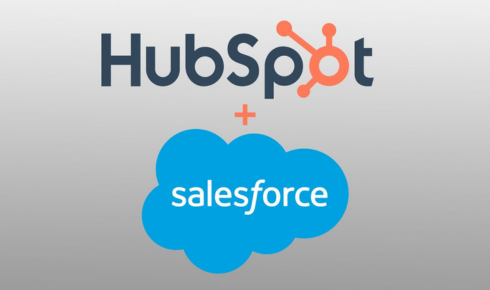Let’s be honest, small businesses in New Zealand don’t just compete on price or product. They compete on relationships. Whether you’re running a boutique in Ponsonby, a café in Wellington, or a plumbing service in Christchurch, your ability to engage with customers makes all the difference.
Engagement isn’t just about sending a thank-you email or asking for a Google review. It’s about creating memorable, human experiences that keep customers coming back. In a world where customers can switch brands with a single click, customer engagement is the new currency of business success.
Why Customer Engagement Matters for Kiwi Small Businesses
Think about the businesses you personally return to. Chances are it’s not just because they sell great products. It’s the café that remembers your oat flat white order, or the local shop owner who asks how your weekend went.
For small businesses, engagement drives:
- Customer loyalty – repeat business is far cheaper than acquiring new customers.
- Referrals – in tight-knit Kiwi communities, word of mouth spreads fast.
- Trust and reputation – engaged customers are more forgiving when mistakes happen.
When done right, engagement isn’t just a “nice to have”, it’s the foundation for growth.
Step 1: Personalisation Without the Creepy Factor
Customers today expect personalisation, but they don’t want to feel like you’re stalking them across the internet. The sweet spot? Personal touches that feel genuine.
- Use their name in communications.
- Recommend products or services based on past purchases.
- Celebrate milestones (like a customer anniversary discount).
For example, a small boutique in Queenstown could send customers a message: “It’s been six months since your last visit, our new winter collection might be just your vibe.” That’s personal without being invasive.
Step 2: Leverage Technology Without Losing Humanity
Here’s the balancing act, how do you scale engagement without sounding robotic? That’s where platforms like HubSpot come in. They allow you to automate routine communication while still sounding human.
A HubSpot agency partner can help small businesses in New Zealand set up workflows that send personalised messages at the right time, without you manually hitting “send” every time. It’s technology with a heartbeat.
Step 3: Engage Across Channels
Not all customers want to interact in the same way. Some love an Instagram DM, others prefer email, and a few still like a quick phone call. The trick? Be present where your customers are.
- Social media for real-time interaction.
- Email for updates and offers.
- SMS for quick reminders.
- In-person touches for locals.
Think of it like rugby, different plays for different positions, but the goal is the same: keep the ball (and customer relationship) moving.
Step 4: Storytelling as a Tool for Connection
Customers engage with stories, not sales pitches. Share the story of how your business started, highlight your team members, or feature behind-the-scenes glimpses.
A bakery in Dunedin, for instance, could share the journey of their sourdough starter that’s been alive for a decade. Suddenly, customers feel like part of that story every time they buy a loaf.
Step 5: Ask, Listen, Act
Engagement isn’t just you talking at customers, it’s listening too. Small businesses that seek feedback and act on it build stronger connections.
- Send short surveys.
- Ask for reviews (and reply to them).
- Host community events where you chat with customers face-to-face.
Customers notice when their input shapes your business. That’s engagement on a deeper level.
Step 6: Reward Loyalty
Who doesn’t love being rewarded? Loyalty programmes, referral bonuses, or even simple “thank-you” gestures go a long way.
For example:
- Coffee cards (buy 9, get the 10th free).
- Exclusive early access to a new service.
- Surprise discounts for repeat customers.
It’s not about the dollar value, it’s about the thought.
FAQs on Customer Engagement
1. What’s the difference between customer engagement and customer service?
Customer service is reactive (solving issues). Customer engagement is proactive (building relationships before there’s a problem).
2. How do small businesses improve engagement on a budget?
Focus on personalisation, storytelling, and community presence. Even simple tools like email newsletters can create big impact.
3. Do I need software for customer engagement?
Not always, but tools like HubSpot streamline things. Working with HubSpot partners ensures you set up processes that feel authentic, not spammy.
4. How do I measure engagement?
Track repeat purchases, customer reviews, social media interactions, and email open rates. If customers keep showing up and talking to you, engagement is working.
A Kiwi Anecdote: Engagement in Action
A local hair salon in Auckland once struggled with no-shows. Instead of getting frustrated, they started sending personalised text reminders along with friendly tips like, “Bring your umbrella, it looks like rain tomorrow.”
Not only did no-shows drop dramatically, but customers felt genuinely cared for. That’s engagement, blending practicality with humanity.
The Role of HubSpot Partners in Engagement
For small businesses ready to level up, working with HubSpot partners can be a game-changer. These experts help tailor HubSpot’s powerful tools for New Zealand’s unique business environment.
A HubSpot agency partner won’t just hand you software. They’ll design engagement strategies that align with your goals, set up automations that feel personal, and train your team to use them effectively.
It’s like having a coach who knows the playbook inside out, so your small business doesn’t just play the game, but wins it.
Wrapping Up: Engagement is the Secret Sauce
Enhancing customer engagement doesn’t require massive budgets or global teams. It’s about:
- Personal touches.
- Smart use of technology.
- Listening and responding.
- Rewarding loyalty.
For New Zealand small businesses, where relationships matter deeply, engagement is the secret sauce that keeps customers loyal, happy, and spreading the word.
















+ There are no comments
Add yours